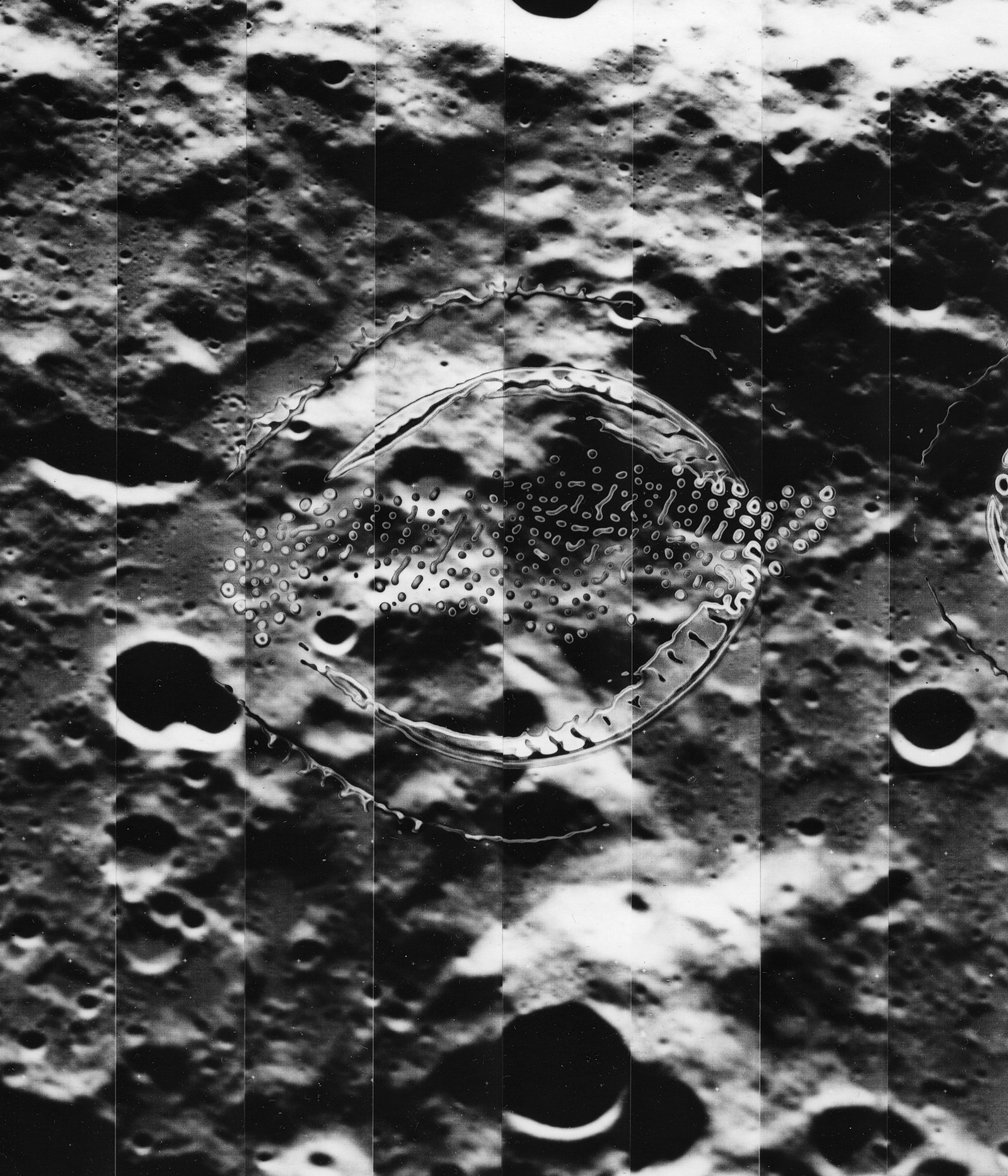
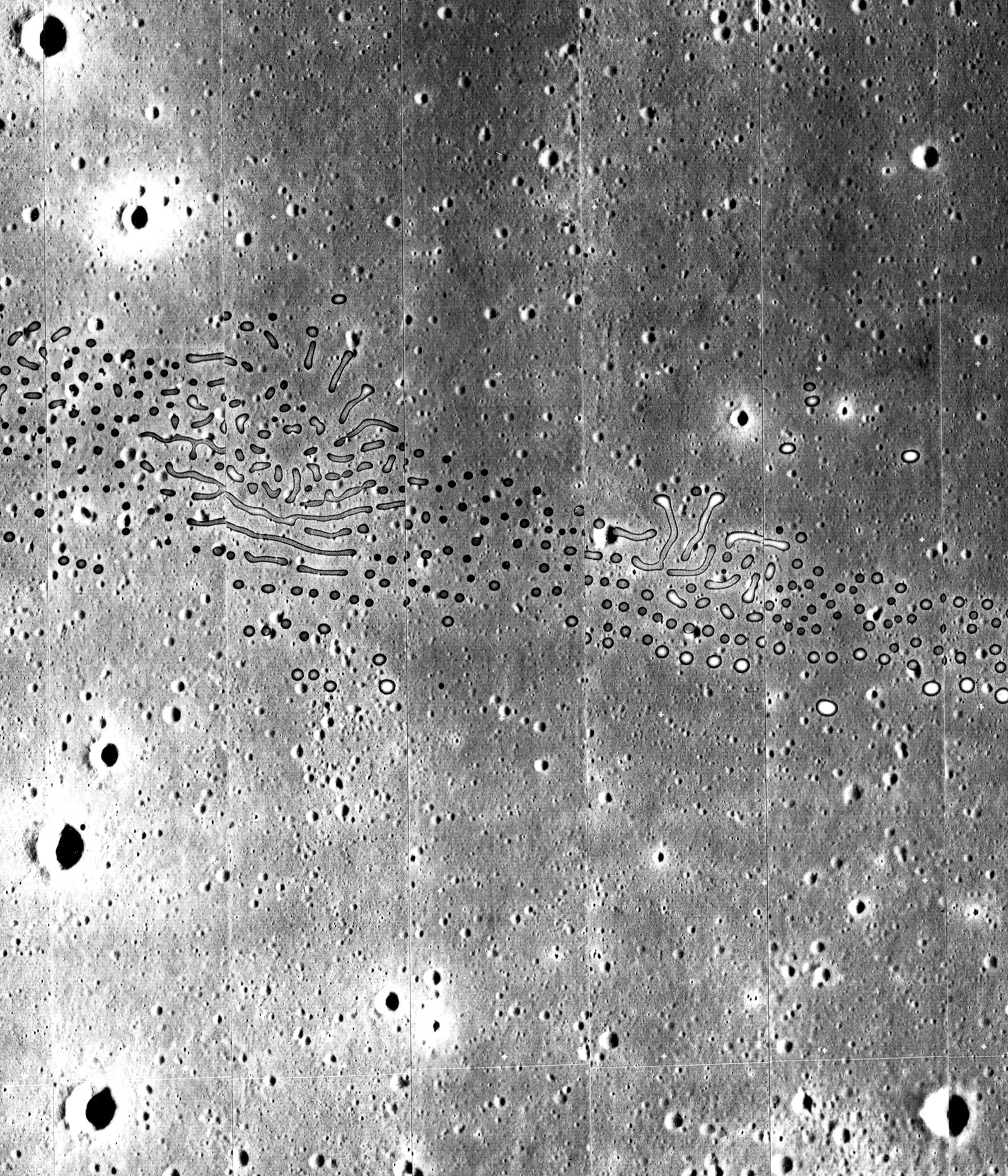
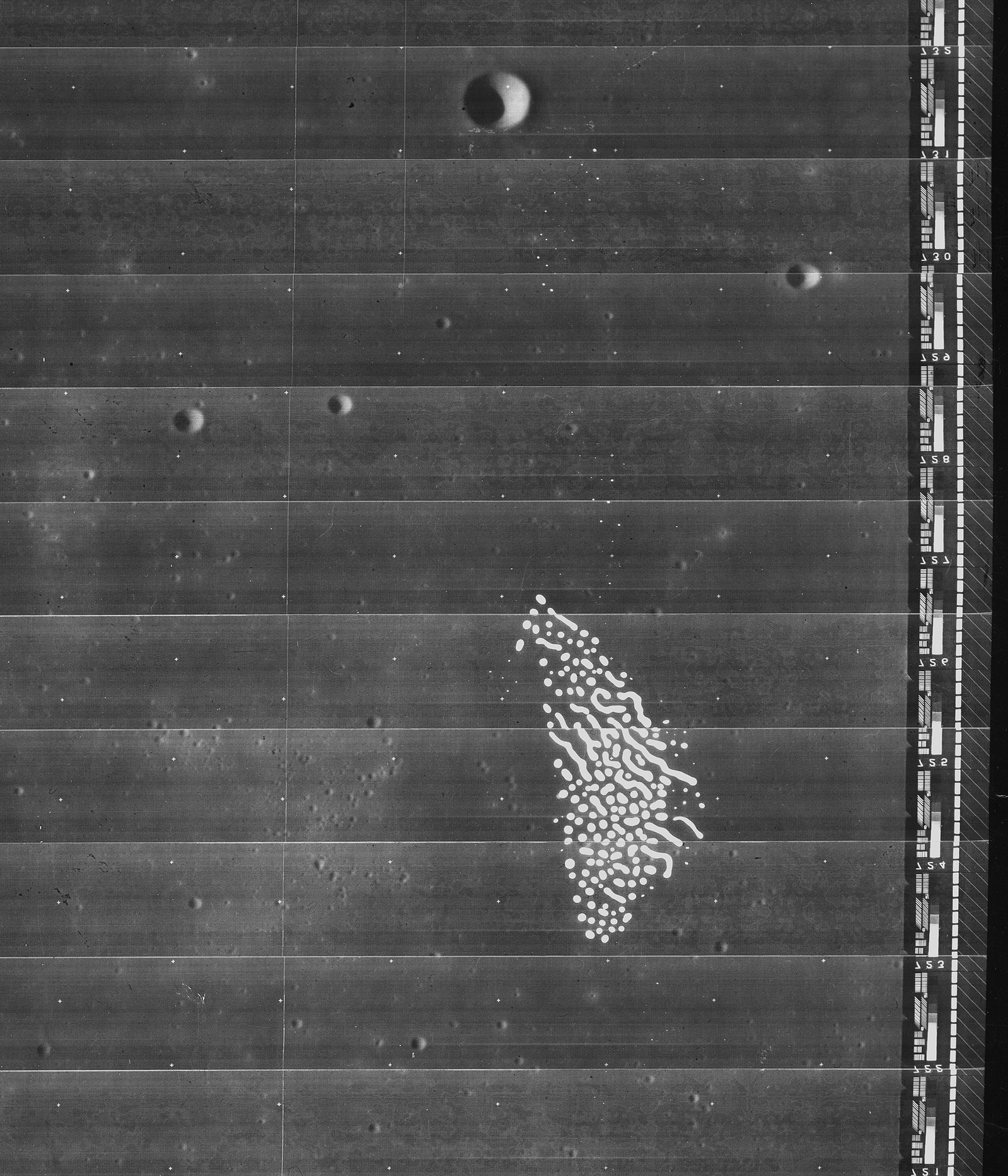
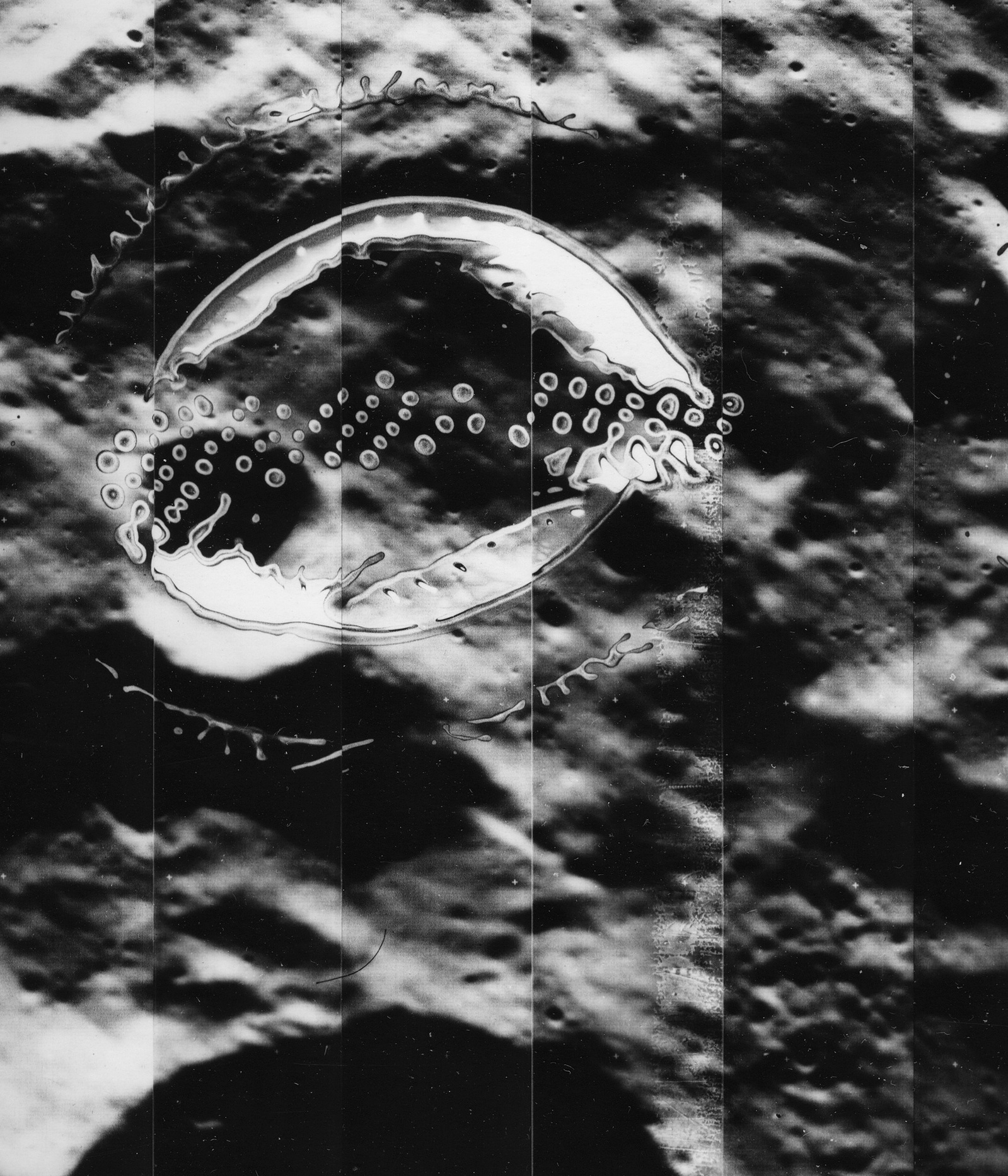

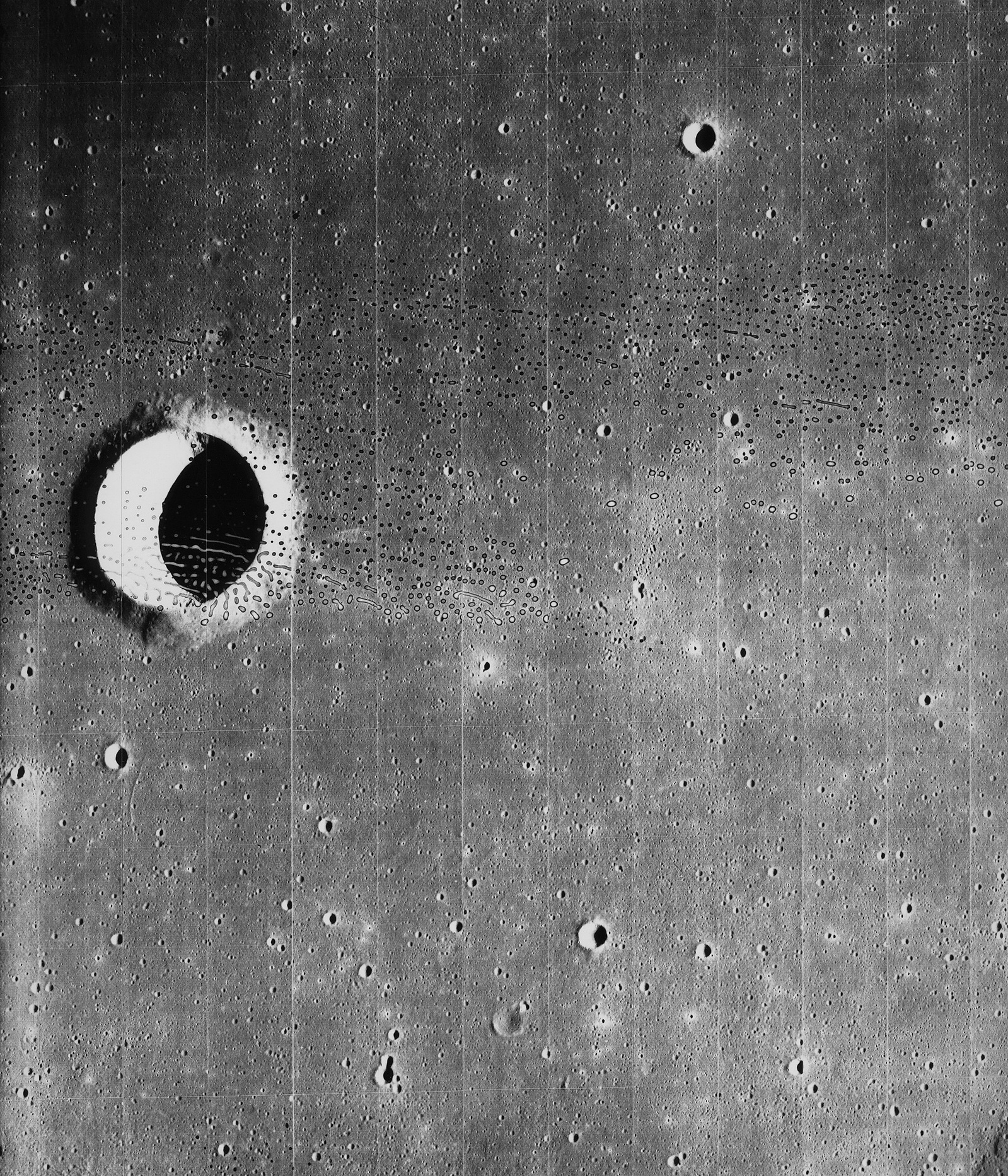
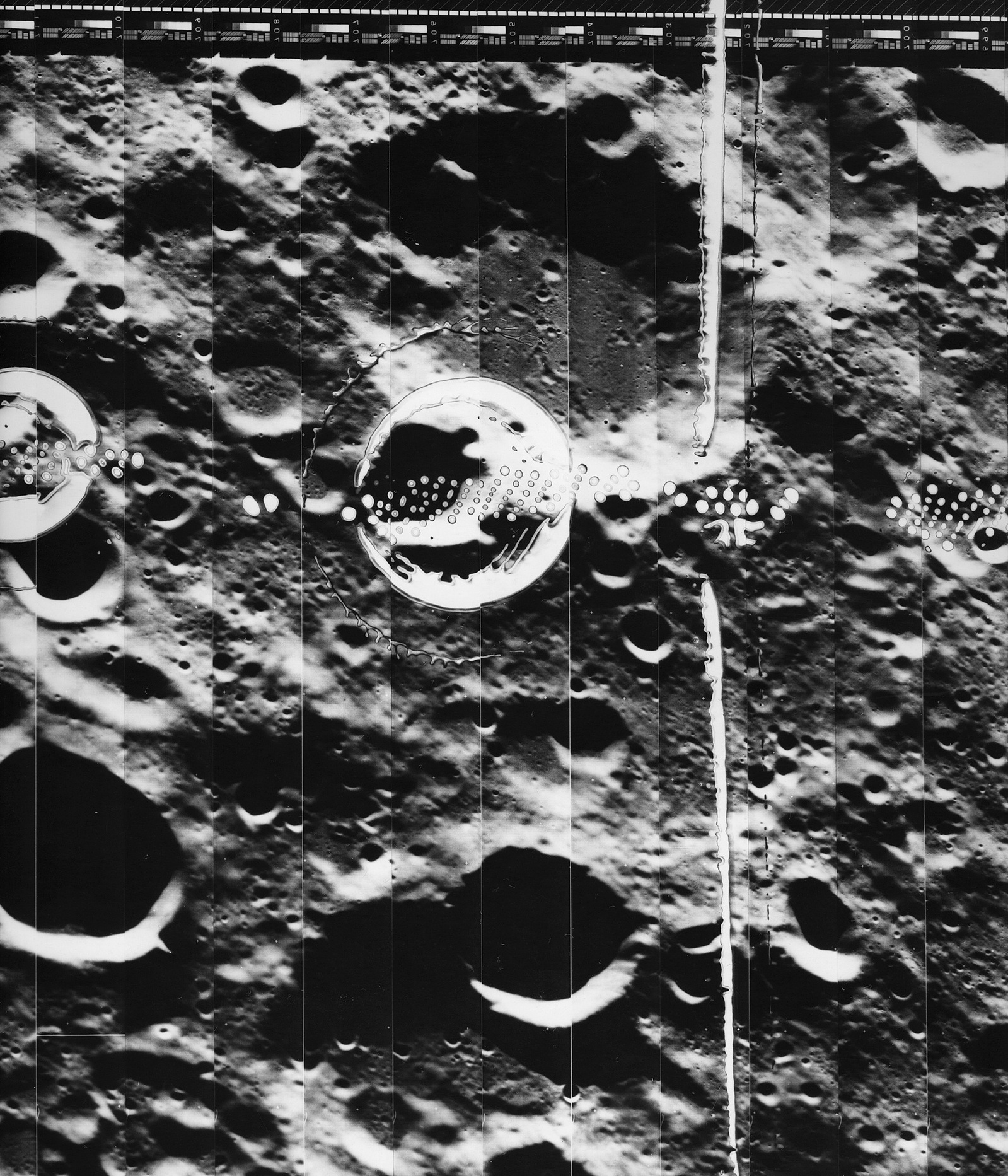

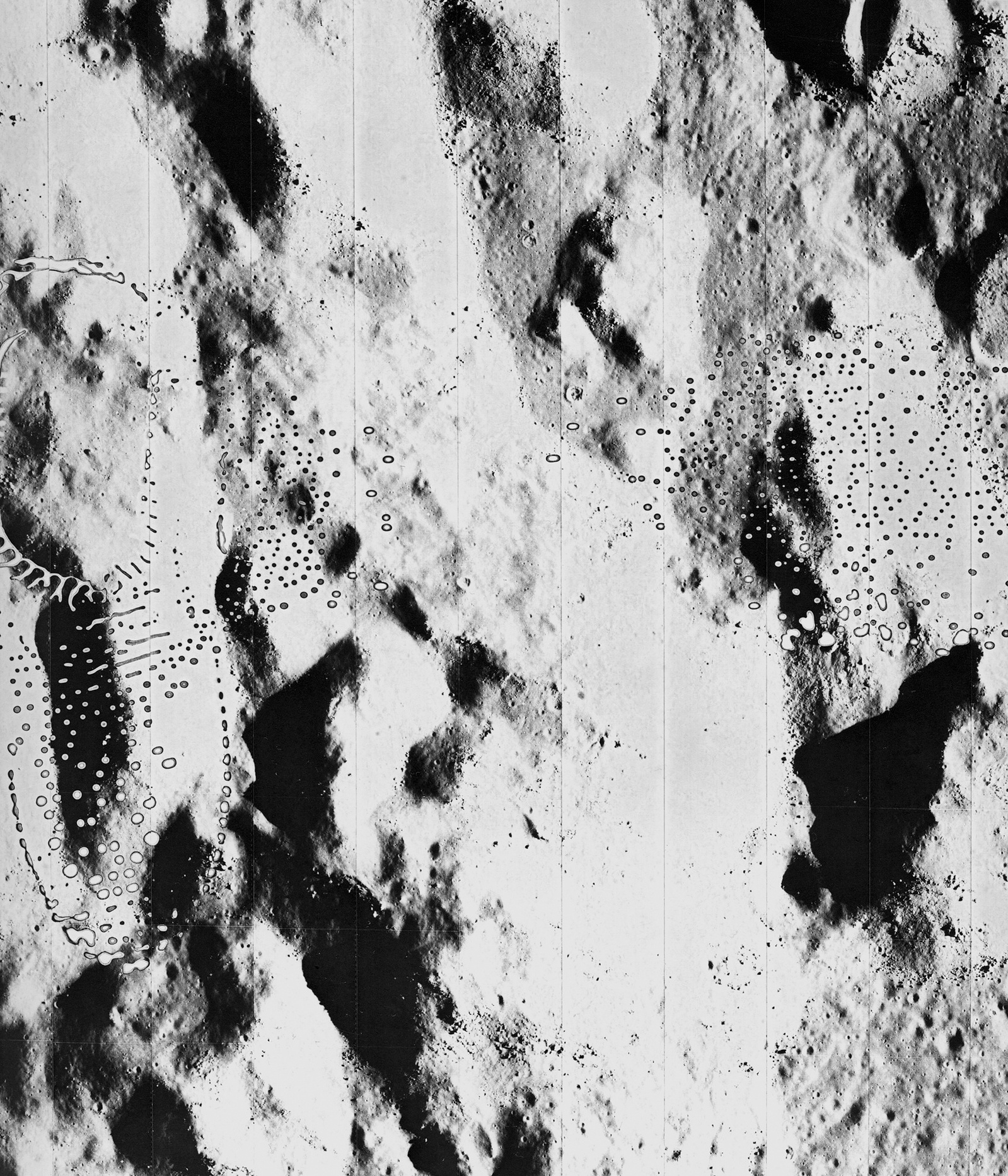
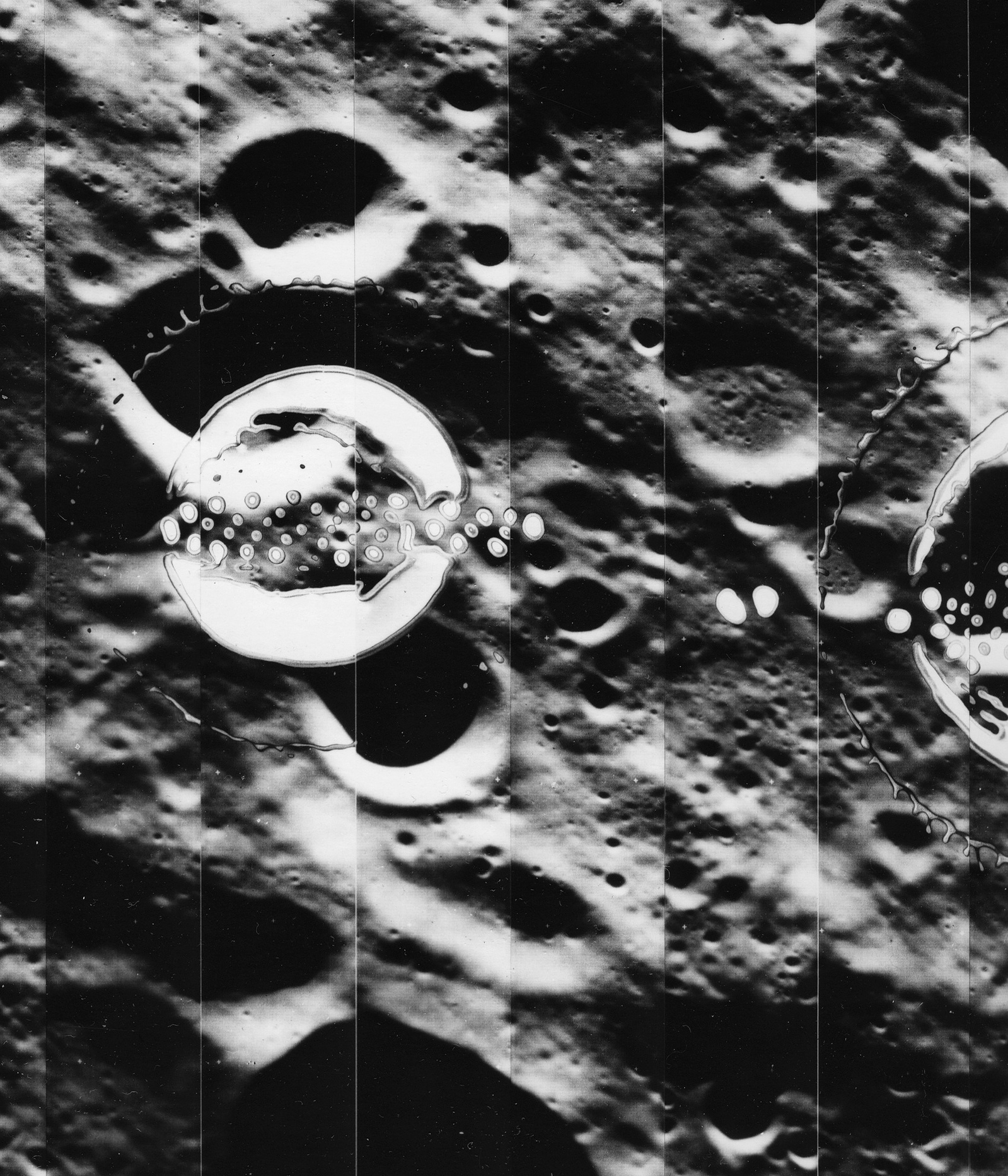
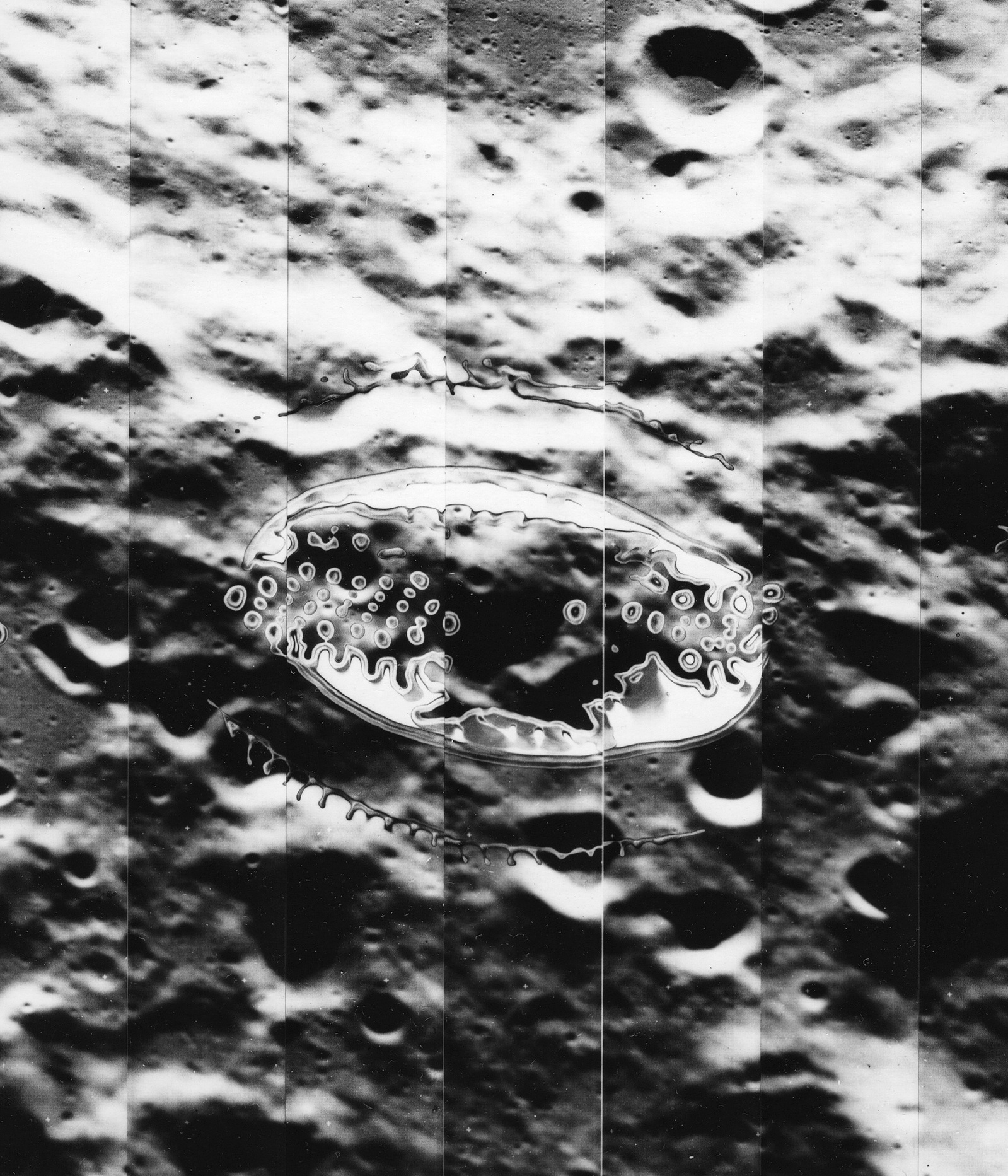

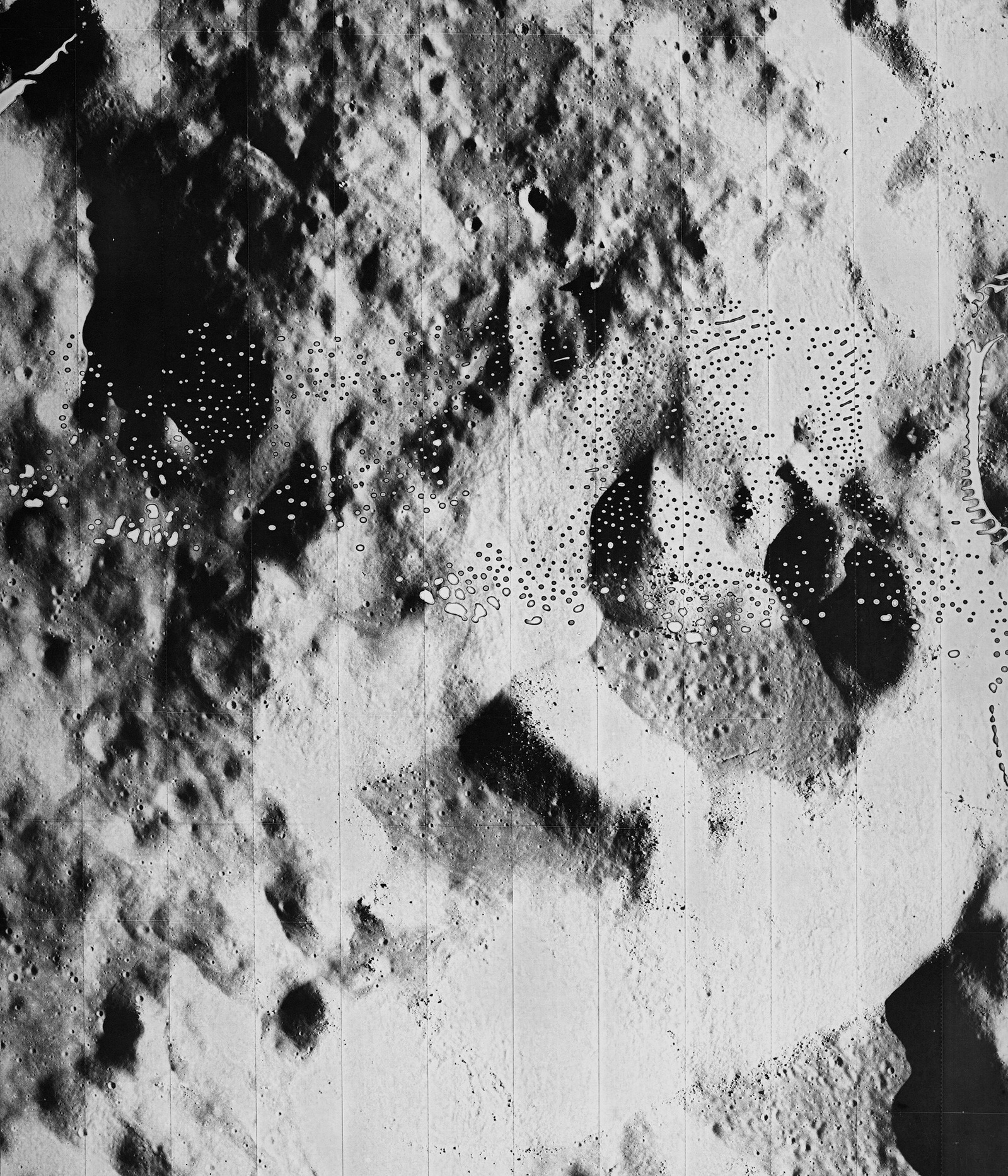

In the winter of 2014, I developed this project through research at a NASA data center. On site are thousands of photographs of the Moon taken from Apollo missions 1 through 17 (1967-1972), made with medium format cameras, large format roll (10” x 100’) film, and a scanning process using 35mm film that was patched into 26” x 30” prints.
While looking at these detailed images of the surface of the Moon, I began to notice aberrations in the prints–tiny marks that appeared to be water droplets. Some of them looked like large craters filled with water while others presented a stipulated pattern spread across regions named “lakes” or “seas,” where no liquid is actually present. According to the research specialist at the Data Center, the marks are most likely from incomplete thawing and condensation on the contact glass or negative.
My appropriation of the Apollo mission photographs re-contextualizes the printer’s unintentional mark-making. In viewing them, one sees a play between the illusionof water on a celestial body (the Moon) and indications of the darkroom printmaking process. I ask the viewer to consider aspects of the darkroom absent indigitizationandthe possibilities for surprise when using chemicals, light, glass, and an enlarger. The archive context whereI sourced the photographs implies the storage of raw information. The flaws in the prints remind the viewer of past technologies and indicate a presence of human error within the archive. They point to the hidden layers between the viewer and the Moon, drawing attention to photography as a mediator. The images no longer represent; they interpret, bend, and shift. These printing flaws allow present-day viewers to experience a moment of open possibility and a fantasy of life-giving liquid on our moon.